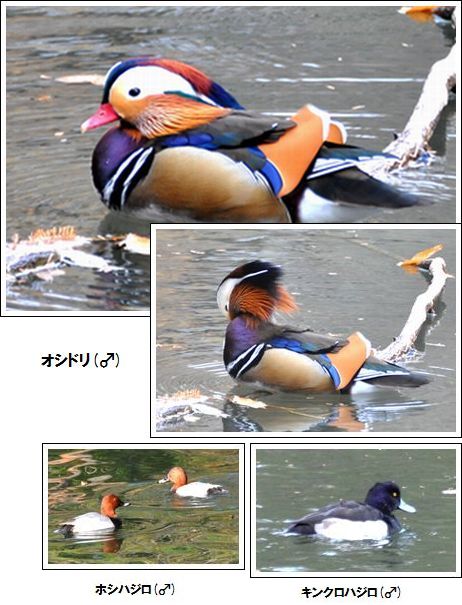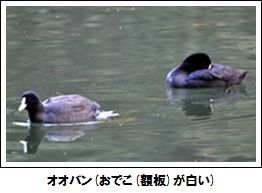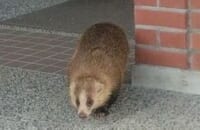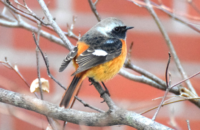
今回は学校近くの宝ヶ池の野鳥を紹介しましょう。北国から越冬する冬鳥はすでに飛来し、12月8日の宝ヶ池はにぎやかな池になっていました。
マガモ、カルガモ、カワウなどは季節で旅をしない「留鳥」ですが、そこに混ざって北方から渡ってきた渡り鳥も楽しそうに遊んでいます。
冬期よく観られるのは、キンクロハジロ、ホシハジロ、ヒドリガモ、オナガガモなどですが、中でもひときわ目立つ鳥がオシドリです。極彩色の衣を身にまとい、羽繕いの仕草もとてもかわいい鳥です。日本では東北以北で繁殖し、冬期に西日本に渡ってくる「漂鳥」のなかまです。京都府では準絶滅危惧種の指定も受けています。
さて、オシドリと言えば、「オシドリ夫婦」という言葉を思いつく人もいるでしょう。でも、実際は毎年のようにパ-トナ-を替えたり、子育てはメスに任せる一夫多妻の鳥なのです。

2学期もいよいよ終わります。厳冬でも宝ヶ池は生き物のざわめきでにぎやかなのです。そんなざわめきを全身で感じるちょっとした散歩を、是非してみませんか?

This time, we will introduce some of the wild birds that can be seen at Takaragaike, near our school. At the start of December, birds fly in from the north and bring energy to Takaragaike.
Because they don’t migrate for the seasons, Mallard Ducks, Spot-billed Ducks, and Great Cormorants can be seen there all year round, but they mix with their visitors from the north.
During the winter, they are joined by Tufted Ducks, Common Pochards, Wigeons, Pintails, and so on, but the ones that stand out the most are the Mandarin Ducks. These ducks not only have vibrant colors, they also are very cute in their mannerisms when preening. They breed in parts of Japan north of the Tohoku area and migrate to western Japan for the winter. In Kyoto, they are classed as an endangered species.
In Japanese, there is the word “Oshidori-fufu” that comes from the Japanese name of these ducks and means “a married couple who get along well”, but the Mandarin Ducks actually change their mates every year and leave the child raising to the females.
Soon the 2nd semester will finish. During the winter break, the wildlife will bring commotion and energy to Takaragaike. If you want to feel this, we suggest that you go for a walk there.




